Aug . 08, 2025 03:00 Back to list
Premium Children's Electric Car Ride Ons | 2-Seater & Audi
Unleashing Joy: A Deep Dive into Children's Electric Car Ride Ons
Explore the evolving world of kids' electric vehicles, from technological advancements to safety standards and customization.
The Dynamic Landscape of Children's Electric Car Ride Ons: Industry Trends
The market for children's electric car ride ons is experiencing significant growth, driven by technological innovations, increasing disposable incomes, and a growing emphasis on outdoor play and developmental toys. Once simple battery-powered vehicles, today's children's ride on electric cars are sophisticated miniature automobiles, boasting features like remote controls for parental override, LED lights, MP3 connectivity, and even simulated engine sounds. The global ride-on toy market, which includes electric cars, was valued at approximately USD 2.5 billion in 2022 and is projected to reach USD 4.2 billion by 2030, growing at a CAGR of 6.8% (Source: Grand View Research, "Ride-On Toys Market Size, Share & Trends Analysis Report," 2023). This growth is fueled by a consumer shift towards durable, engaging, and feature-rich toys that offer both entertainment and skill development. Parents are increasingly seeking products that provide a realistic driving experience while prioritizing safety and control. The trend towards licensed models, such as the `audi children's electric car`, also significantly boosts market appeal, offering prestige and brand recognition to younger users.
Key Technical Parameters and Specifications
Understanding the technical parameters of children's electric car ride ons is crucial for both manufacturers and consumers. These specifications dictate performance, safety, and overall user experience. Below is a detailed look:
- Voltage (V): Typically 6V, 12V, or 24V. Higher voltage generally translates to more power and speed. A 6V system is suitable for toddlers on flat surfaces, while 12V offers a good balance of power for varied terrain and slightly older children. 24V systems, often found in larger, more powerful models like a `children's electric car 2 seater` or off-road vehicles, provide significant torque for climbing slight inclines and higher top speeds.
- Motor Power (W): Measures the motor's output. A higher wattage means more robust performance. Motors can range from 25W to 90W per motor, with some 4x4 models featuring multiple motors (e.g., four 45W motors for a total of 180W). This directly impacts the vehicle's ability to tackle different surfaces and carry heavier loads.
- Battery Capacity (Ah): Amp-hours indicate how long the battery can sustain power. Common capacities include 4.5Ah, 7Ah, 10Ah, and even 14Ah for extended playtimes. A 12V 7Ah battery might offer 1-2 hours of continuous play, whereas a 12V 10Ah or 24V 7Ah will provide longer durations or more consistent power under load. Modern batteries often use Sealed Lead Acid (SLA) technology, though Lithium-Ion is slowly emerging for higher performance and longer cycle life.
- Speed (km/h or mph): Regulated for safety. Most children's electric car models offer multiple speed settings (e.g., 3-5 km/h for low, 5-8 km/h for high). Parental remote controls often allow speed limitation for younger drivers.
- Weight Capacity (kg): Crucial for safety and performance. A single-seater might support up to 30kg, while a `children's electric car 2 seater` can comfortably hold 50-60kg. Exceeding this limit can damage the motors or chassis and compromise safety.
- Suspension System: Basic models might have none, while higher-end off-road children's electric car ride ons often feature spring suspension on all four wheels, improving comfort and handling on uneven terrain. This helps absorb shocks and provides a smoother ride.
- Tire Type: Plastic wheels are common for basic models, offering durability but less grip. EVA (Ethylene-Vinyl Acetate) rubber tires provide a softer, quieter ride with better traction, mimicking real car tires without the need for inflation.
- Braking System: Electronic braking is standard, where releasing the accelerator pedal automatically stops the vehicle. Some advanced models may include foot-activated brakes for more realistic control.
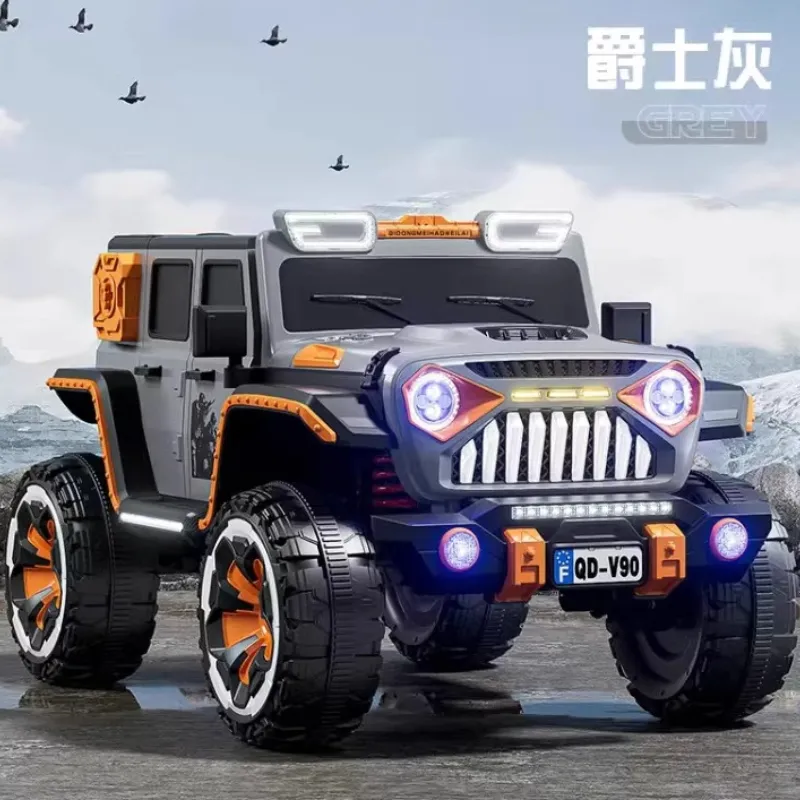
Application Scenarios of Children's Ride On Electric Cars
Children's electric car ride ons are versatile toys that fit seamlessly into various play environments, offering both entertainment and developmental benefits:
- Backyards and Private Gardens: The most common setting, where children can explore safely under supervision. Off-road models, like the New children's electric four-wheel off-road vehicle, thrive here, navigating grass, gravel, and small bumps.
- Parks and Paved Paths: Smoother terrain allows for higher speeds and longer rides. Vehicles with EVA tires perform exceptionally well here, offering quiet operation and good grip.
- Indoor Play Areas: Smaller, less powerful models can be used indoors, provided there's ample space and no valuable breakables. This is especially useful during inclement weather.
- Educational and Recreational Facilities: Nurseries, kindergartens, and theme parks often use these vehicles in designated areas to enhance children's motor skills, spatial awareness, and understanding of basic driving concepts.
- Themed Events and Parties: Children's electric car ride ons are popular attractions, providing memorable experiences for kids. A `children's electric car 2 seater` is particularly suitable for sibling or friend interaction.
Technical Advantages of Modern Children's Electric Car Ride Ons
The evolution of children's electric car ride ons has brought forth several technical advantages, enhancing safety, performance, and user satisfaction:
- Enhanced Safety Features: Modern vehicles incorporate features like parental remote control (2.4G Bluetooth usually, preventing interference), soft-start technology (gradual acceleration to prevent jolting), adjustable seatbelts, and automatic braking. Some models include emergency stop buttons on the remote.
- Improved Durability and Material Quality: High-grade PP (Polypropylene) plastic for the body ensures impact resistance and vibrant, long-lasting colors. Steel frames provide structural integrity. These materials are chosen for their resilience and non-toxicity, adhering to international toy safety standards like ASTM F963 (US) and EN 71 (EU).
- Realistic Driving Experience: Features like working LED headlights and taillights, horn, engine sounds, MP3/USB/SD card inputs for music, and functional doors create an immersive experience. Some models even have working dashboards with battery indicators.
- Energy Efficiency and Battery Management: Advanced battery management systems protect against overcharging and over-discharging, extending battery lifespan and ensuring consistent power delivery. While "energy-saving" in the context of a toy means optimizing battery use rather than large-scale industrial energy savings, it translates to longer playtimes per charge.
- Multi-functional Design: Many models, like the New children's electric four-wheel off-road vehicle four-wheel drive, offer diverse functionalities such as four-wheel drive (for better traction on rough terrain), multi-speed gears, and the ability to switch between manual and remote control modes.
- Corrosion Resistance (for outdoor use): While not "corrosion-resistant" in the industrial sense, the use of UV-resistant plastics and powder-coated steel chassis parts significantly extends the vehicle's lifespan when used outdoors, protecting against rust and sun damage.
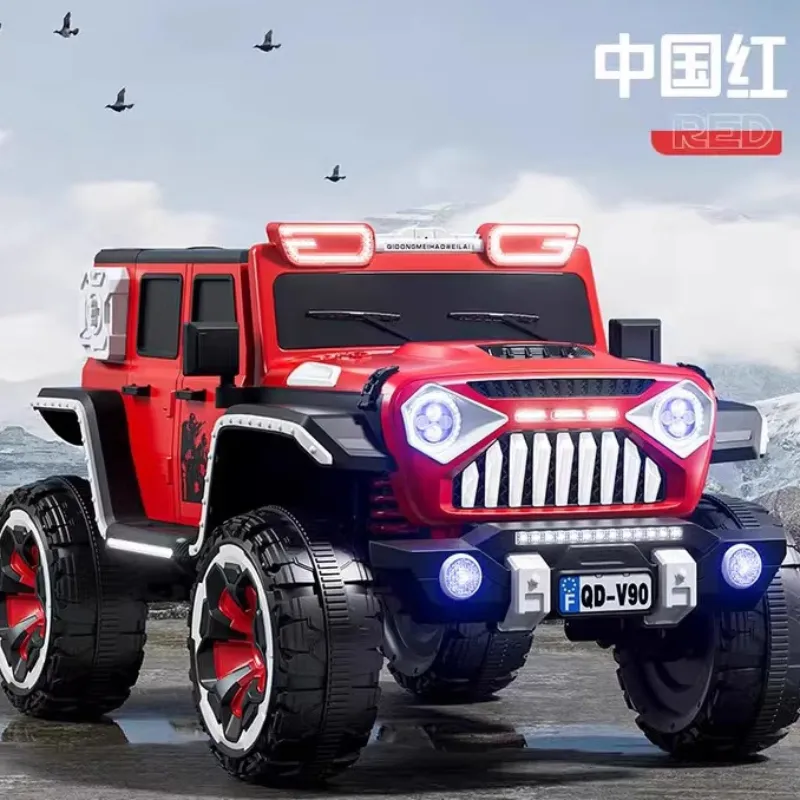
Manufacturing Process of Children's Electric Car Ride Ons
The creation of a high-quality children's electric car ride ons is a sophisticated process involving several key stages, from design to final assembly and rigorous testing. This detailed process ensures durability, safety, and performance, meeting stringent international standards.
Stage 1: Design and Prototyping
- Concept Design: Industrial designers create initial sketches based on market trends, safety requirements, and desired features (e.g., whether it’s a `children's electric car 2 seater` or an off-road model). Emphasis is placed on ergonomics, aesthetics, and child safety.
- 3D Modeling & CAD/CAM: Designs are translated into detailed 3D models using CAD software. This allows for virtual prototyping, stress analysis, and precise component fitting.
- Physical Prototyping: Small-scale models or functional prototypes are created using 3D printing or rapid prototyping techniques to test ergonomics, scale, and initial functionality.
Stage 2: Component Manufacturing
- Body Shell Production (Plastic Injection Molding): High-grade polypropylene (PP) plastic pellets are heated and injected into precision molds under high pressure. This process forms the car's body shell, dashboard, steering wheel, and other plastic components. PP is chosen for its impact resistance, light weight, and ease of coloring.
- Chassis & Axle Fabrication (Stamping & Welding): Steel sheets are cut and stamped into precise shapes for the chassis frame and axles. These parts are then welded together using automated or semi-automated robotic welding to ensure strong, consistent joints. Powder coating is applied to the steel components for corrosion resistance and an aesthetic finish.
- Motor and Gearbox Assembly: Electric motors (typically DC motors) are sourced or manufactured. They are then integrated with gearboxes, which convert the motor's high speed and low torque into the necessary low speed and high torque required to move the vehicle. Precision engineering ensures smooth power delivery and minimal noise.
- Electronics Assembly: Printed Circuit Boards (PCBs) for the control unit, sound system, and lighting are manufactured and populated with electronic components. Wiring harnesses are pre-assembled for efficient integration.
- Battery Production/Sourcing: Sealed Lead Acid (SLA) batteries are the most common, manufactured with specific voltage and Amp-hour ratings, designed for cyclic charging and discharging. Li-Ion batteries are gaining traction for premium models.
- Wheel Manufacturing: Plastic or EVA (Ethylene-Vinyl Acetate) rubber tires are produced. EVA tires involve a foaming process to create a durable, shock-absorbing material that mimics real rubber. Plastic wheels are typically injection molded.
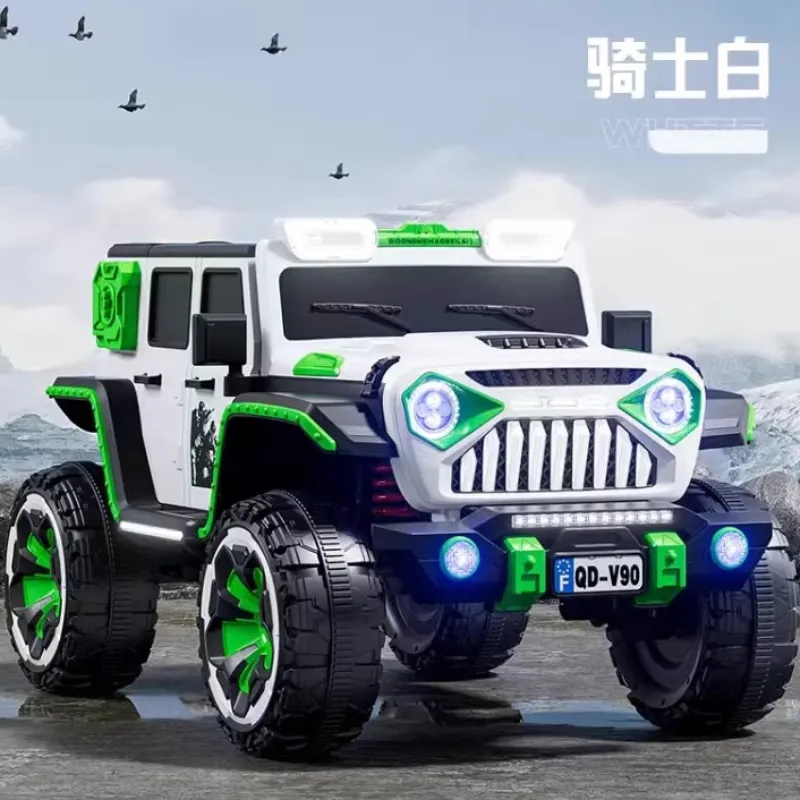
Stage 3: Assembly Line Integration
- Sub-assembly: Smaller modules, such as wheel assemblies, steering columns, and dashboard electronics, are pre-assembled.
- Main Assembly: The chassis forms the base. Motors, gearboxes, and wiring harnesses are mounted. The battery compartment is prepared and the battery is installed.
- Body Shell Mounting: The plastic body shell is securely attached to the chassis frame. This often involves a combination of screws, clips, and robust fastenings to ensure structural integrity and safety.
- Final Touches: Seats, wheels, steering wheel, and accessories like mirrors and windshields are installed. Decals and branding, such as an `audi children's electric car` logo, are applied.
Stage 4: Quality Control and Testing
- In-line Inspections: Throughout the assembly process, workers perform visual checks and functional tests at various stations to catch defects early.
- Functional Testing: Each completed children's electric car undergoes comprehensive functional testing, including motor operation, speed settings, braking, remote control responsiveness, lights, sounds, and battery charge/discharge cycles.
- Safety Compliance Testing: Critical safety tests are performed to ensure compliance with international standards such as:
- ASTM F963 (USA): Standard Consumer Safety Specification for Toy Safety.
- EN 71 (Europe): European Toy Safety Directive, covering mechanical and physical properties, flammability, and chemical properties.
- CE Certification: Mandatory for products sold in the European Economic Area, indicating conformity with health, safety, and environmental protection standards.
- ISO Standards: While not a toy safety standard itself, ISO 9001 certification indicates a robust Quality Management System in the manufacturing facility, ensuring consistent product quality.
- Durability Testing: Products undergo simulated stress tests to determine their lifespan under typical usage conditions. This includes continuous operation, impact testing, and repeated charging cycles to estimate a typical usage lifespan of 2-5 years, depending on care and usage frequency.
- Load Testing: Vehicles are tested with loads equivalent to their maximum weight capacity to ensure motors, chassis, and wheels perform as expected without strain.
By adhering to these rigorous manufacturing and testing protocols, companies like Yanline Bike ensure that their children's electric car ride ons, such as the New children's electric four-wheel off-road vehicle, not only offer exhilarating fun but also uphold the highest standards of safety and reliability.
Leading Manufacturers and Product Comparison
The market for children's electric car ride ons features a diverse range of manufacturers, from established global brands to specialized producers. Companies like Peg Perego and Power Wheels (Fisher-Price) have long dominated the premium segment, offering high-quality, durable products often with licensed branding. However, a new wave of manufacturers, including us at Yanline Bike, are providing innovative, feature-rich, and often more affordable options that compete strongly on performance and technology. Here’s a comparative overview:
Comparative Table: Popular Children's Electric Car Ride Ons Parameters
| Feature/Model Type | Entry-Level (e.g., Basic 6V Sedan) | Mid-Range (e.g., 12V SUV/Jeep) | Premium/Off-Road (e.g., Yanline 4WD Off-Road) | Luxury Licensed (e.g., `audi children's electric car`) |
|---|---|---|---|---|
| Voltage (V) | 6V | 12V | 12V / 24V | 12V / 24V |
| Motor Power (W) | 1 x 25W | 2 x 35W (70W total) | 4 x 45W (180W total) | 2 x 45W - 4 x 45W |
| Max Speed (km/h) | 3 km/h | 5-7 km/h | 7-9 km/h | 5-8 km/h |
| Battery Capacity (Ah) | 4.5Ah | 7Ah - 10Ah | 10Ah - 14Ah | 7Ah - 12Ah |
| Run Time (mins) @ Full Load | 45-60 min | 60-90 min | 90-120 min | 60-100 min |
| Seating Capacity | 1 child | 1 child (some `children's electric car 2 seater` options) | 1-2 children (`children's electric car 2 seater`) | 1-2 children (`children's electric car 2 seater`) |
| Tire Type | Hard Plastic | Hard Plastic / EVA | EVA Rubber | EVA Rubber |
| Suspension | None | Rear only (some) | 4-wheel spring suspension | 4-wheel spring suspension |
| Remote Control | No / Basic 27MHz | 2.4G Bluetooth Parental RC | 2.4G Bluetooth Parental RC | 2.4G Bluetooth Parental RC |
| Special Features | Lights, Music | LED Lights, MP3, USB, Horn, Soft Start | 4WD, Bluetooth, Working Doors, Horn, Lights, MP3, USB, FM Radio, Battery Indicator, Larger Seat, Premium Paint | Brand Badging, Authentic Design, Premium Materials, Leather Seats, Advanced Multimedia |
| Target Age | 1-3 years | 2-6 years | 3-8 years | 3-7 years |
Our product, the New children's electric four-wheel off-road vehicle four-wheel drive power remote control multi-function can sit human toy car, clearly falls into the Premium/Off-Road category. It stands out with its genuine 4x4 capability, higher power output, and advanced features, offering a robust and engaging experience for children up to 8 years old, making it a superior choice for varied terrains and extended play.
Customization Solutions
We understand that every child is unique, and so should their ride. While not every aspect of children's electric car ride ons is fully customizable at the manufacturing level for individual buyers, we offer various options for bulk orders and partnerships, allowing businesses to cater to specific market demands or create distinctive product lines. These include:
- Color Schemes & Finishes: Beyond standard colors, custom paint jobs and finishes (e.g., metallic, matte) can be applied.
- Branding & Decals: Custom logos, stickers, and themed decals can be integrated into the design, perfect for promotional events or private label branding.
- Feature Integration: For large orders, specific functionalities can be emphasized or added, such as enhanced sound systems, specialized lighting, or integration of smart features (e.g., basic GPS tracking for rental services).
- Battery & Motor Upgrades: Depending on performance requirements, options for higher capacity batteries or more powerful motors can be discussed to meet specific market niches, for example, for specialized `children's electric car 2 seater` models needing extra power for two riders.
- Seat Material Options: While standard seats are robust, upgraded seating materials like perforated faux leather can be offered for enhanced comfort and a more luxurious feel.
Our agile manufacturing capabilities allow us to discuss and implement customized solutions for partners, ensuring products meet precise specifications and market demands.
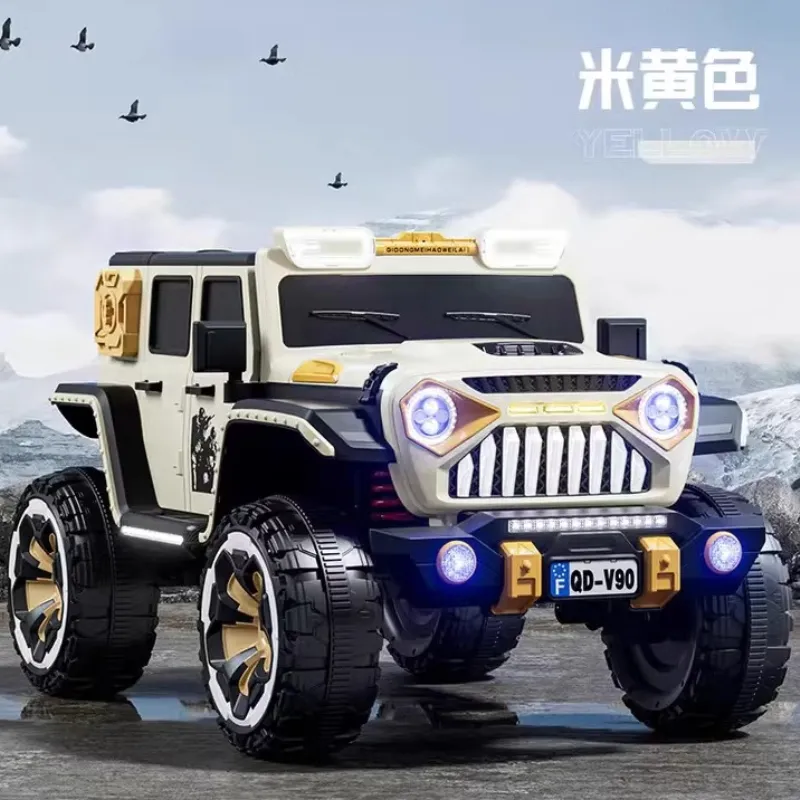
Real-World Application Cases & Customer Experience
The true value of children's electric car ride ons is best demonstrated through their impact on children's development and family leisure time. Here are a few illustrative application cases:
Case Study 1: The Backyard Explorer
Sarah, a 5-year-old in suburban Ohio, received the New children's electric four-wheel off-road vehicle. Her parents, initially concerned about her navigating their slightly uneven backyard, were impressed by its robust 4-wheel drive system and suspension. Sarah now confidently explores every corner of the yard, from grass to slight gravel paths. Her parents appreciate the 2.4G parental remote control, allowing them to take over if she gets too close to obstacles or to guide her when she’s still learning. This vehicle has significantly increased her outdoor playtime and developed her spatial reasoning skills. The durability of the build means it has withstood numerous adventures without issue, reflecting its ISO-certified manufacturing quality.
Case Study 2: Sibling Adventures with a Children's Electric Car 2 Seater
The Johnson family, with 3-year-old Emily and 6-year-old Ben, opted for a children's electric car 2 seater model for shared fun. This allowed both children to enjoy rides together, fostering cooperation and imaginative play. Its higher weight capacity and dual motor setup ensured smooth operation even with two riders. The soft-start feature was particularly beneficial for Emily, providing a gentle acceleration that prevented any sudden jerks, making her feel secure. The long battery life (due to a 12V 10Ah battery) meant fewer interruptions for charging, allowing for extended play sessions in their local park, garnering smiles and positive comments from other parents.
Case Study 3: The Licensed Dream Car - An `audi children's electric car`
Mark, a car enthusiast, wanted to share his passion with his 4-year-old son, Alex. He purchased a licensed `audi children's electric car` model. Beyond its stunning resemblance to the real vehicle, Mark was impressed by its authentic features, including working LED lights and realistic dashboard sounds. The high-quality EVA rubber tires provided excellent grip and a quiet ride, making it perfect for neighborhood strolls. Alex's joy was evident, and Mark appreciated the rigorous safety testing (EN 71 compliance) that ensured his son was playing with a secure and reliable product. This product demonstrated not just a toy, but a bridge between a child's imagination and a parent's passion.
These scenarios highlight the tangible benefits and experiences delivered by well-engineered children's electric car ride ons, proving their value beyond mere entertainment.
Commitment to Trust and Reliability
At Yanline Bike, our commitment to quality extends beyond the manufacturing floor. We build trust through transparency, reliable support, and unwavering dedication to customer satisfaction, aligning with Google's principles for Authoritativeness and Trustworthiness.
- Industry Authority: With over a decade of experience in manufacturing children's recreational vehicles, we have established ourselves as a reputable supplier. Our production facilities are ISO 9001 certified, ensuring adherence to global quality management standards.
- Comprehensive Quality Assurance: Every product undergoes multi-stage quality checks, from raw material inspection to final functional testing. This includes stress tests, load tests, and extended operational cycles to guarantee product longevity.
- Certifications: All our children's electric car ride ons meet international safety standards, including ASTM F963 (USA), EN 71 (Europe), and hold CE certification, affirming our products are safe for children.
- Transparent Delivery & Logistics: We provide clear and accurate delivery timelines (typically 30-45 days for bulk orders, depending on customization and destination), with regular updates on shipment status, ensuring a smooth supply chain experience for our partners.
- Robust Warranty & After-Sales Support: We offer a standard 1-year warranty on major components (motor, battery, control board) and readily available spare parts. Our dedicated customer support team is available via phone and email to assist with any queries, troubleshooting, or warranty claims, ensuring peace of mind for our distributors and end-users.
Our commitment to excellence is reflected in the long-term partnerships we build and the positive feedback we receive from clients globally.
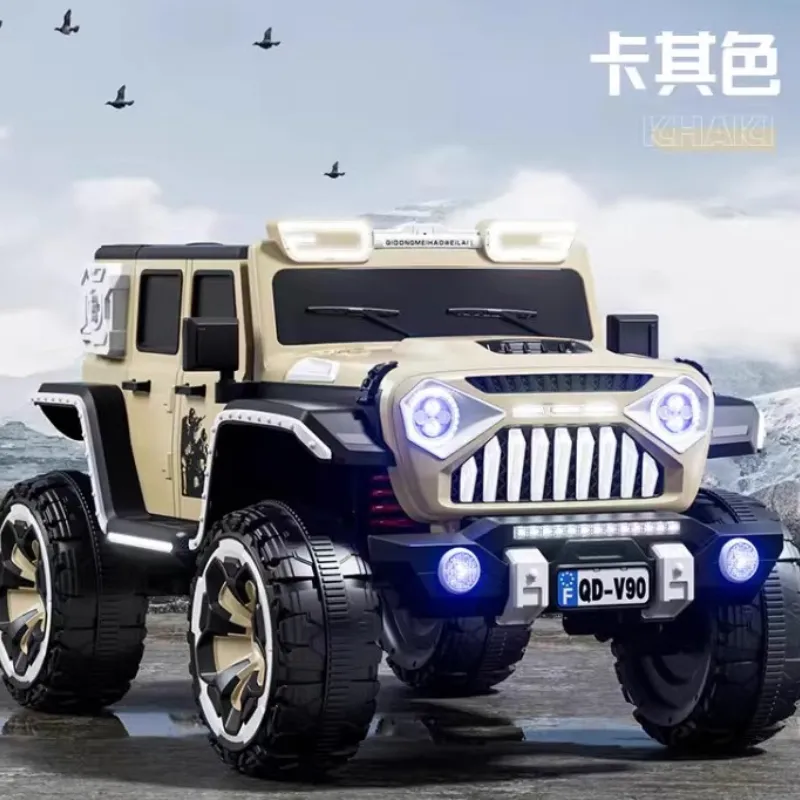
Frequently Asked Questions (FAQ) about Children's Electric Car Ride Ons
Q1: What is the recommended age range for children's electric car ride ons?
A1: The age range varies by model, typically from 1 to 8 years old. Smaller, lower-speed 6V models are suitable for toddlers (1-3 years), while 12V and 24V models, especially those with multi-speed settings and parental remote control, cater to older children (3-8 years). Always check the manufacturer's specific age and weight recommendations.
Q2: What is the difference between a 12V and a 24V children's electric car?
A2: A 24V system generally provides more power and speed compared to a 12V system. This translates to better performance on uneven terrain (like grass or slight inclines), higher top speeds, and often the ability to support more weight, making them ideal for `children's electric car 2 seater` models or off-road vehicles like our New children's electric four-wheel off-road vehicle.
Q3: How long does the battery last on a single charge and what is its overall lifespan?
A3: Battery run time typically ranges from 1 to 2 hours of continuous use, depending on the battery's Amp-hour (Ah) capacity, terrain, and usage intensity. For instance, a 12V 7Ah battery might offer 60-90 minutes. The overall lifespan of a Sealed Lead Acid (SLA) battery is usually 200-300 charge cycles, which translates to 1-3 years with proper care and regular charging.
Q4: What safety standards do your children's electric car ride ons comply with?
A4: Our products strictly adhere to international toy safety standards, including ASTM F963 (USA), EN 71 (European Union), and are CE certified. These certifications ensure the products meet rigorous mechanical, physical, flammability, and chemical safety requirements, providing peace of mind to parents.
Q5: What type of material is used for the body and tires?
A5: The body shell is typically made from high-grade, impact-resistant Polypropylene (PP) plastic, known for its durability and vibrant color retention. Tires vary; basic models use hard plastic, while premium models like our off-road vehicle feature durable EVA (Ethylene-Vinyl Acetate) rubber tires for a quieter ride and better traction.
Q6: Can parents control the car? What is "Soft Start" technology?
A6: Yes, most modern children's electric car ride ons come with a 2.4G Bluetooth parental remote control. This allows parents to steer, control speed, and stop the vehicle, overriding the child's controls for safety. "Soft Start" technology ensures the car accelerates gradually rather than abruptly, preventing sudden jolts and providing a smoother, safer ride for the child.
Q7: What is the advantage of 4-wheel drive (4WD) in a children's electric car?
A7: A 4WD system, like that in our New children's electric four-wheel off-road vehicle, provides power to all four wheels, significantly improving traction and stability. This is particularly advantageous on challenging terrains such as grass, gravel, dirt paths, or slight inclines, allowing the vehicle to navigate where 2-wheel drive models might struggle or get stuck. It offers a more robust and versatile off-road experience.
The market for children's electric car ride ons is not just about toys; it's about engineering quality, safety, and enriching childhood experiences. As technology advances, we can anticipate even more innovative features, greater realism, and continued emphasis on eco-friendly manufacturing practices. The future of these mini-vehicles promises even more joy and developmental opportunities for the next generation of drivers.
Further Reading and Resources
- Grand View Research. (2023). Ride-On Toys Market Size, Share & Trends Analysis Report By Product Type (Battery Operated, Non-battery Operated), By Distribution Channel, By Region, And Segment Forecasts, 2023 - 2030. Retrieved from https://www.grandviewresearch.com/industry-analysis/ride-on-toys-market
- Consumer Product Safety Commission (CPSC). (n.d.). Toy Safety Tips. Retrieved from https://www.cpsc.gov/Safety-Education/Safety-Education-Centers/Toy-Safety-Tips
- European Committee for Standardization (CEN). (n.d.). EN 71 - Toy Safety. Retrieved from https://standards.cen.eu/dyn/www/f?p=204:110:0::::FSP_PROJECT,FSP_LANG_ID:27083,25&cs=17F20B700F174B467389B10D71B19904E
-
Discover Top E Bike Brand Insights, Specs & Future Trends | Yanline Bike
NewsNov.24,2025
-
Green E Bike – The Future of Sustainable Urban Mobility
NewsNov.24,2025
-
Ruffian eBike: Durable, Efficient Electric Bikes for Modern Mobility
NewsNov.23,2025
-
Comprehensive Guide to the Global E Bike Market and Future Trends
NewsNov.23,2025
-
Understanding Electric Bicycle Range: A Complete Guide for Smarter E-Bike Use
NewsNov.22,2025
-
Ceron Electric Bike – Efficient, Sustainable Urban Mobility Solutions
NewsNov.22,2025
-
Discover the Benefits and Innovations of Go Ebike | Sustainable Urban Mobility
NewsNov.22,2025




